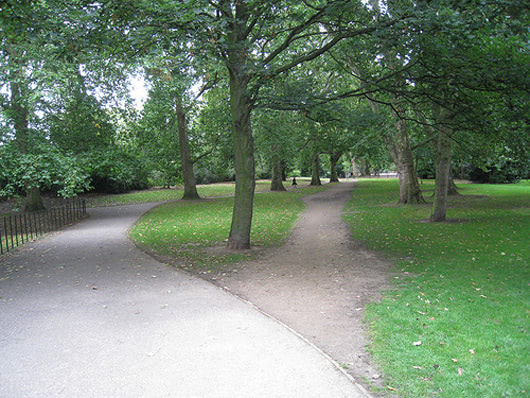Design by planning vs design by doing. Desire paths are unplanned paths grown by the erosion of its use. They emerge as shortcuts where constructed pathways take a circuitous route. Perhaps one day, all our roads will be desire paths.
Share your thoughts and join the technology debate!
8 comments

JS
http://www.olifantenpaadjes.nl/
Posted on
natinja
The desire path is what emerges when you put the ground of efficiency over the figure of leisure.
Posted on
John Date
In fact, this is how CMU's sidewalks were located: allowing the preferred paths to dictate the placement of sidewalks.
Posted on
jurrian
These have also been a topic of discussion in a Don Norman lecture a while back ( in the Designhuis, Eindhoven)
Posted on
Gerrit
In Mike Kuniavsky's book "Smart Things: Ubiquitous Computing User Experience Design" he discusses the "desire line method", which applies desire paths/lines to ubicomp design. As Chris already said, architect Christopher Alexander experimented with desire lines by first laying out buildings, then watching people wear desire lines between the buildings, then paving the lines in to formal paths. Kuniavsky cites "Alexander, C. (1975). The Oregon Experiment. New York: Oxford University Press" as the source.
Posted on
Koert van Mensvoort
@chris: Do you have a link. It is indeed interesting that they are entirely user generated, crowd based paths (to use some boomeranged metaphors)
Posted on
Shalom Craimer
On QI ("Quite Interesting") they mentioned a lovely name that park-designers have for people who walk in parks and create such "desire lines". They call them "Meanderthalls" (sounds like a combination of "meander" and "Neanderthals").
Posted on
chris
Excellent. Christopher Alexander wrote about these, preferring to pave such paths after they appear, rather than dictating the one path for everyone to take.
Posted on